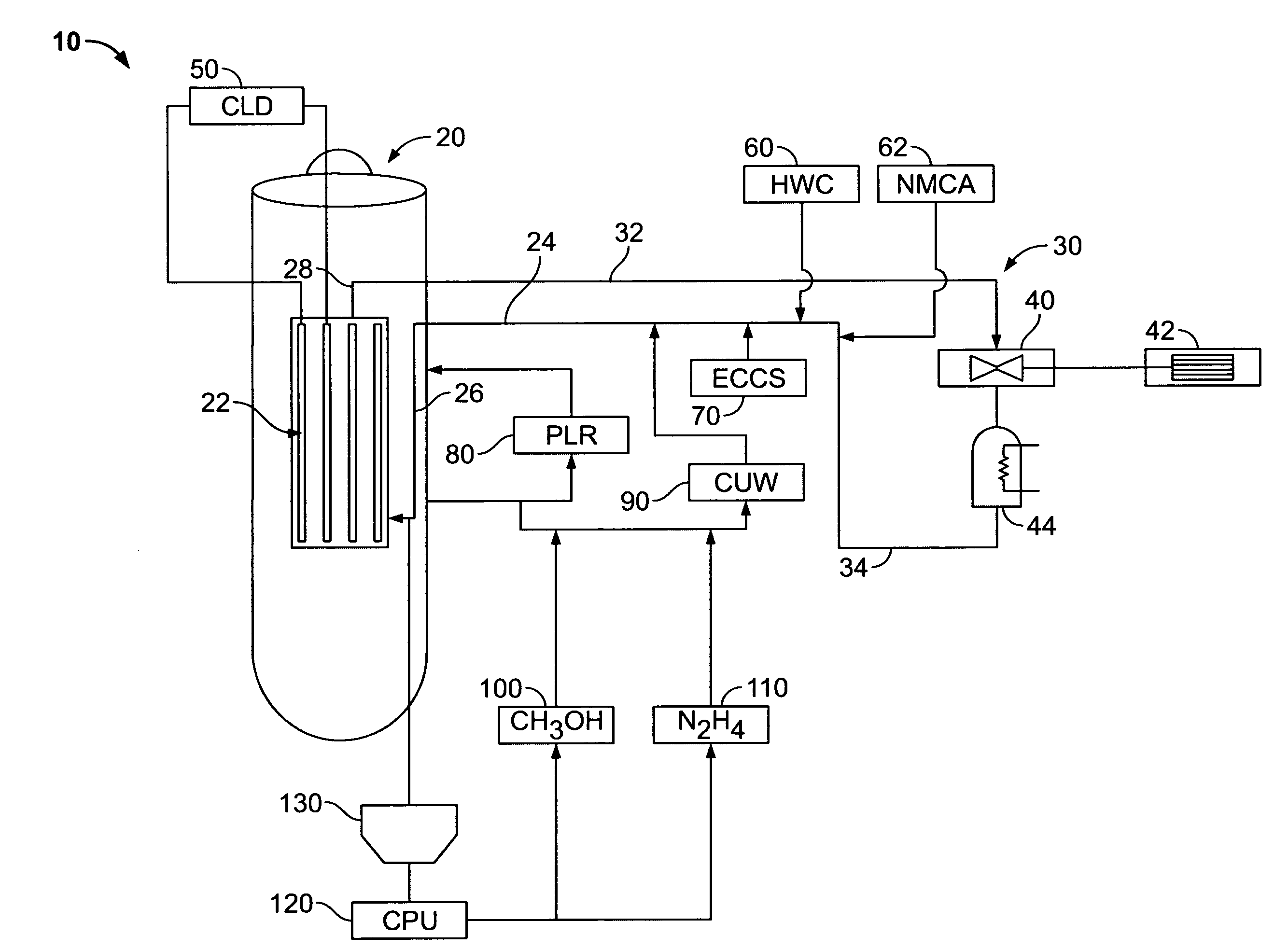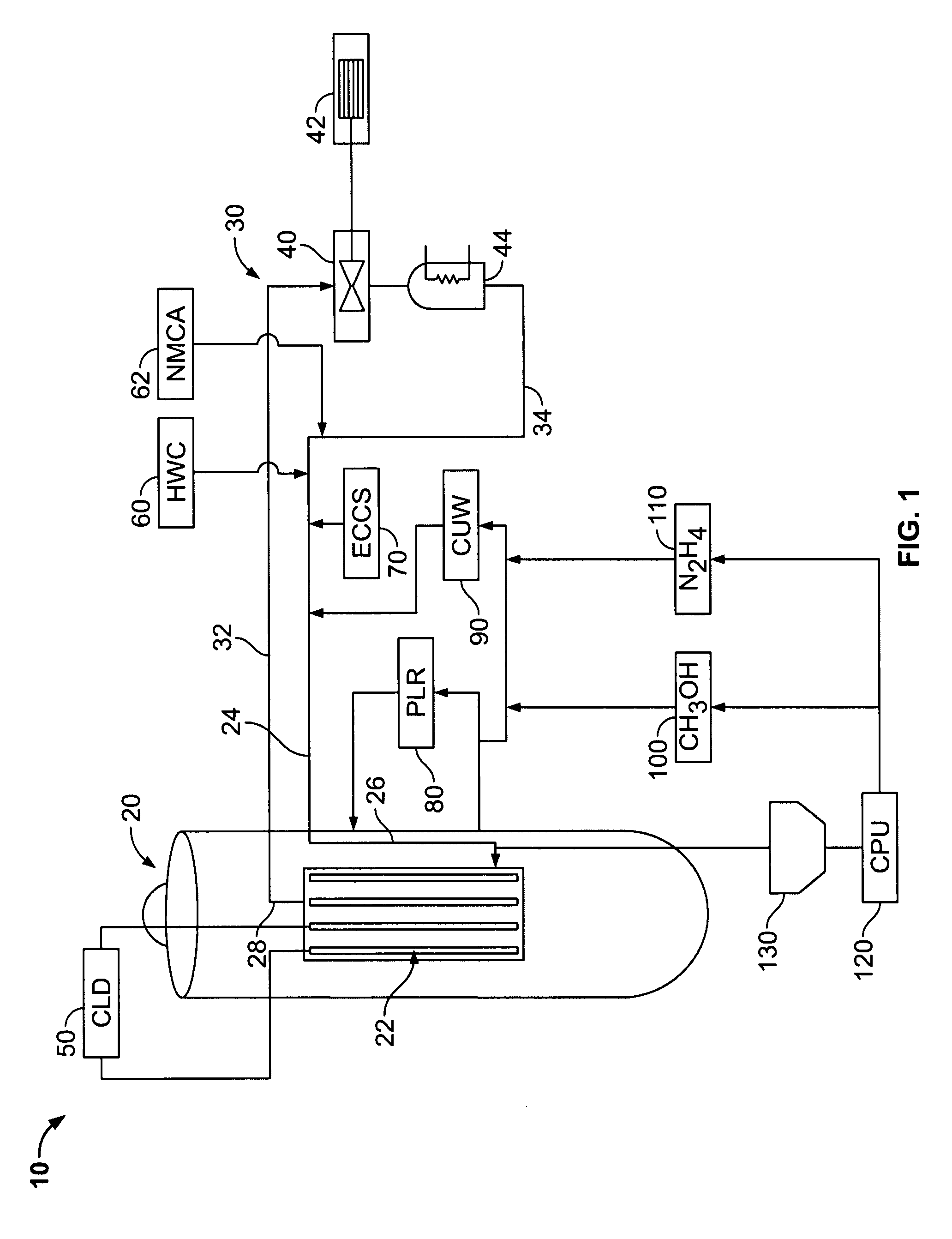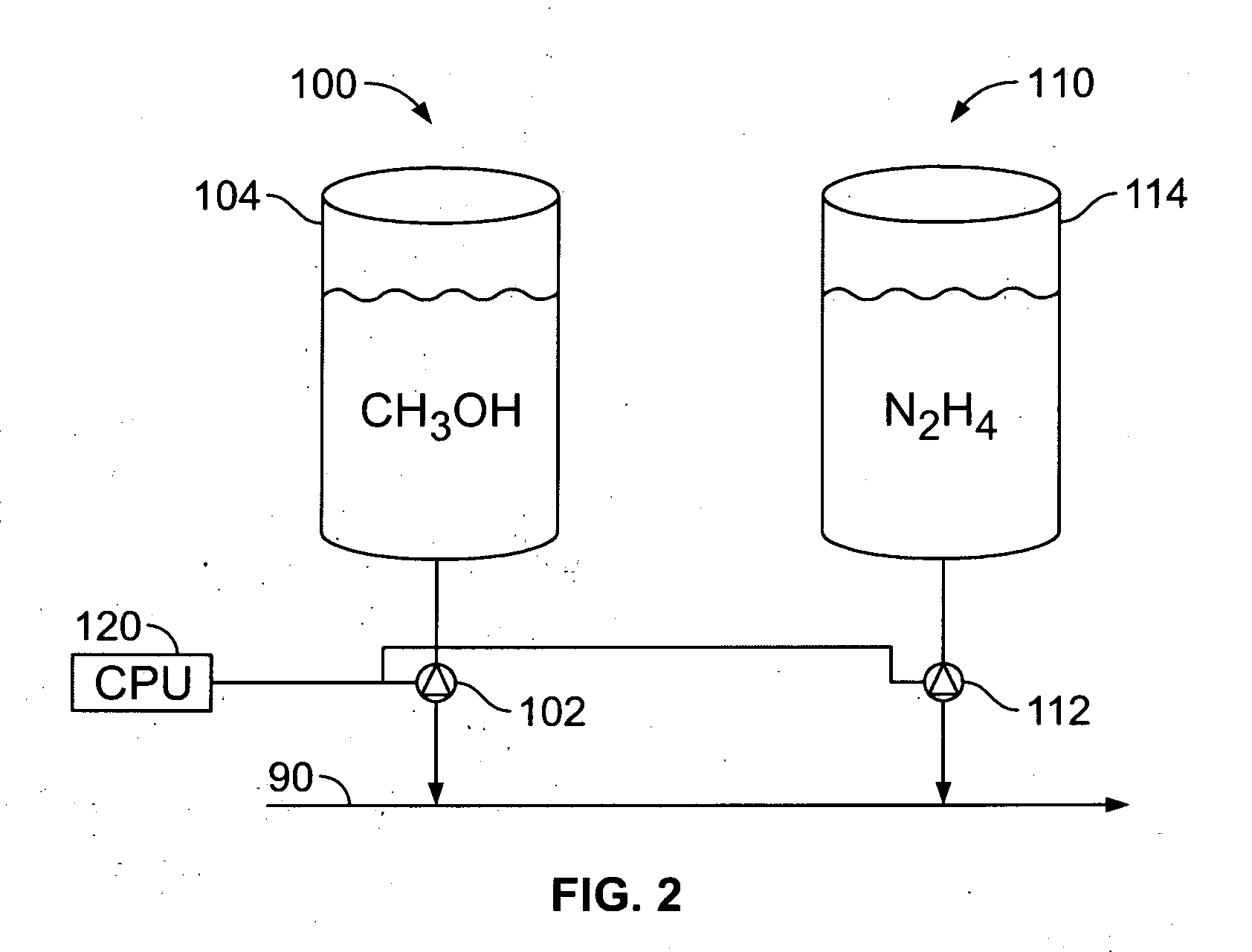Boiling water reactor nuclear power plant with alcohol injection
a nuclear power plant and boiler technology, applied in the direction of nuclear elements, greenhouse gas reduction, nature of treatment water, etc., can solve the problems of not being able to properly maintain a proper, difficulty in proper dosing of gaseous hydrogen, and inability to inject hydrogen at other times, so as to reduce the amount of hydrogen being used and achieve the effect of adequate oxidation reduction
- Summary
- Abstract
- Description
- Claims
- Application Information
AI Technical Summary
Benefits of technology
Problems solved by technology
Method used
Image
Examples
Embodiment Construction
[0024]FIG. 1 shows schematically one preferred embodiment of a BWR nuclear power plant 10 according to the present invention. Nuclear power plant 10 has a BWR 20 having a core 22 with a plurality of fuel rods having, for example, uranium dioxide fuel in zirconium alloy tubes, a downcomer 26 and a riser 28, shown schematically. Downcomer 26 is connected to a primary coolant inlet 24, which receives water from a primary coolant line 30. Core 22 heats water from the primary coolant line 30, which has a hot leg 32 providing steam to a turbine 40 driving a generator 42. A condenser 44 condenses the steam into water, which exits the condenser into a cold leg 34 of coolant line 30, and is pumped back to the inlet 24 and downcomer 26.
[0025]A control rod drive cooling system (CLD) 50 can be provided to cool a drive for control rods inserted into core 22. An HWC hydrogen injector 60 can inject hydrogen into cold leg 34, and an NMCA injector 62 can provide a noble metal for example, platinum, ...
PUM
 Login to View More
Login to View More Abstract
Description
Claims
Application Information
 Login to View More
Login to View More - R&D
- Intellectual Property
- Life Sciences
- Materials
- Tech Scout
- Unparalleled Data Quality
- Higher Quality Content
- 60% Fewer Hallucinations
Browse by: Latest US Patents, China's latest patents, Technical Efficacy Thesaurus, Application Domain, Technology Topic, Popular Technical Reports.
© 2025 PatSnap. All rights reserved.Legal|Privacy policy|Modern Slavery Act Transparency Statement|Sitemap|About US| Contact US: help@patsnap.com



